Assignment
In October 1853, Brigham Young, President of the Church of Jesus Christ of Latter-day Saints, gave Apostle Lorenzo Snow a special assignment. He was to choose 50 families to take with him and his family to join the pioneers already living in the Box Elder settlement. His assignment was twofold — first to colonize a model community and secondly to organize a system of cooperative living in which the people would eventually produce everything they consumed. Apostle Snow had carefully selected tradesmen with various skills important to the development of a pioneer community. They included a schoolteacher, mason, carpenters, and blacksmiths.1Leonard J. Arrington. “Cooperative Community in the North, Brigham City, Utah.” Utah Historical Quarterly. Vol. 33, Number 3, Summer 1965, pp. 199-200. http://utah.ptfs.com/awweb/awarchive?item=34423
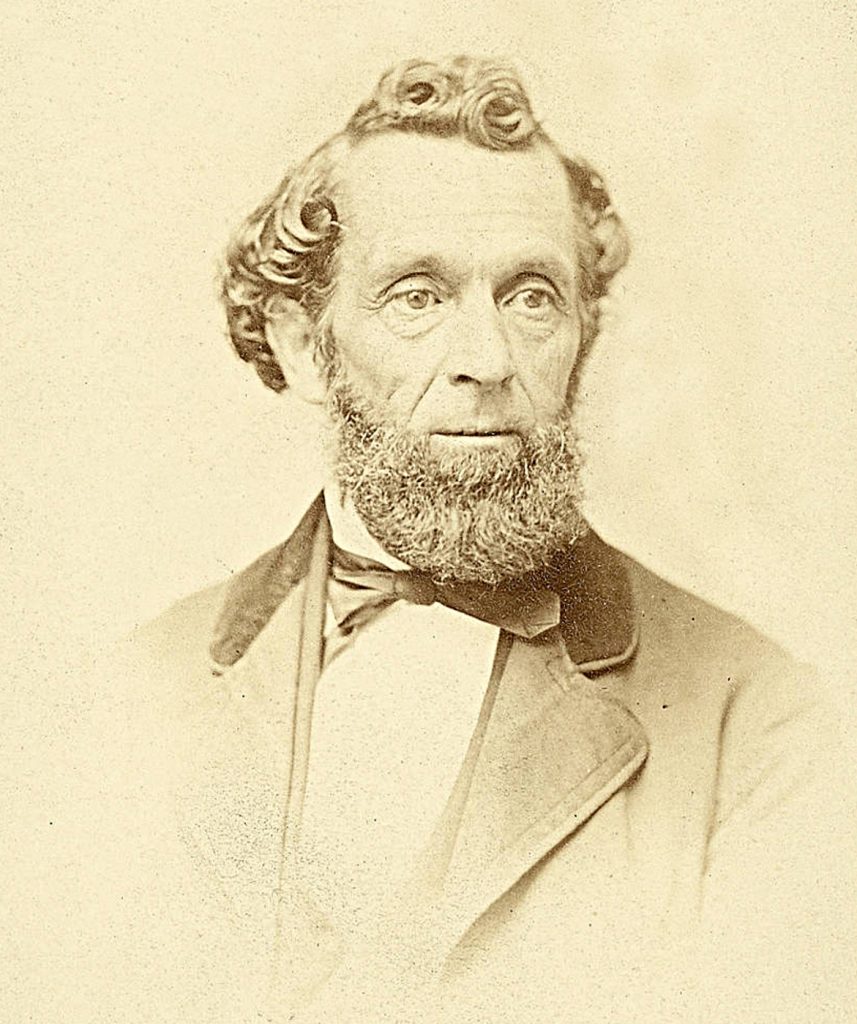
The newcomers began arriving in the spring of 1854 and met the settlers already living near Box Elder Creek. It is unclear precisely which families were among the 50 selected by Lorenzo Snow, or when they each arrived. While Snow was frequently in Brigham City in the mid-1850s, he had not moved his entire family until closer to 1860.2The 1856 Census shows them in Salt Lake, Millard County, and other places in the state as well as in Brigham (the entire family was certainly not living in Brigham full time). See http://www.rootsweb.ancestry.com/~utgenweb/Census/1856UT/frame.html?cj=1&netid=cj&o_xid=0001231185&o_lid=0001231185&o_sch=Affiliate+External (page 15 in the Box Elder County section)
This influx of pioneers transformed the small settlement to a sizable town which was renamed Brigham City in honor of Brigham Young. Snow became the political and religious leader of the community. He had the town surveyed by Territorial Surveyor Jesse Fox, and families selected lots and built permanent homes. The new home built for the Snow family was located on Main Street and measured thirty by forty feet. This home was the second dwelling in Brigham City inhabited by members of the Snow family. They first lived in a “small and incommodious
The hut in question was on 1st East, “a little more than a block north of the courthouse.” The house was later sold to Abraham Hunsaker.4Haws, Gwen Hunsaker, and Kenneth B. Hunsaker, eds. History of Abraham Hunsaker and His Family. Second Edition. Abraham Hunsaker Family Organization, 2001. http://www.abrahamhunsaker.org/abraham/Welcome_files/Abraham%20Hunsaker%20History.pdf, 67.
This home became the stopping place for Brigham Young and his company of tourists whenever they visited the northern settlements. The Snow family often entertained as many as forty guests at once.5Snow, Biography and Family Record of Lorenzo Snow, One of the Twelve Apostles of the Church of Jesus Christ of Latter-Day Saints, 261. Chapter 34.
By 1863 Brigham City was already being called a “model town” by travelers visiting or passing through. Two years later, in 1865, after ten years of colonizing efforts, Snow himself was confident that the community of Brigham City was well-established with a population of 1,600 residents. He was ready to begin implementing his cooperative enterprise, and in December of that year it was formed. Lorenzo Snow, Samuel Smith, William Thomas, and Alvin Nichols were the first stockholders, making a total investment of $3,000. Stock was available to all the townspeople at $5 a share, and produce and labor as well as cash were accepted. The first business was a mercantile store managed by J. C. Packer. Existing small retailers were persuaded to participate, making the Co-op Mercantile Store virtually the only store in town. 6Mark Riddle. “Lorenzo Snow and the Brigham City Cooperative.” Brigham Young University Thesis. (pages unnumbered.)

Industries of the Brigham City Mercantile and Manufacturing Association
By 1866, the Co-op Store had generated enough money for the association to establish its first industry, a tannery. The two-story tannery building, measuring 45 by 80 feet, was constructed at a cost of $10,000 and was managed by Abraham Hunsaker. By 1870 the tannery was producing $10,000 of leather annually, and the operation added a boot and shoe shop and a saddle and harness department to utilize leather from the tannery. By 1877, the boot and shoe shop had produced $132,000 worth of leather goods, which were used for local needs and sold in outside markets.7Arrington p. 202.

To comply with the Territorial Incorporation Act of 1870, the cooperative organization was incorporated December 15, 1870, and became the Brigham City Mercantile and Manufacturing Association, still commonly known as the Brigham City Co-op. The organization boasted seven directors and 126 stockholders. Almost every resident of the community was involved in some way.
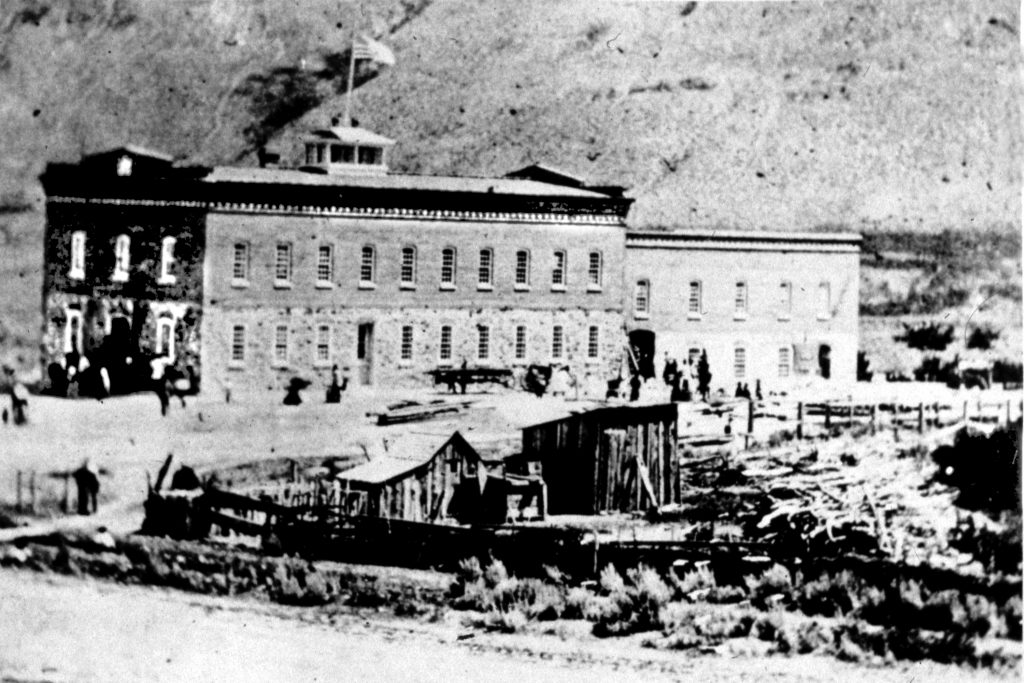
The organization’s second industry was the $35,000 woolen factory, its most expensive venture, built in 1870-71. The two-story building was 44 by 88 feet and equipped with machinery from the East, including a spinning jack with 200 spindles and four broad and three narrow looms. Supervised by James Pett, the factory produced $40,000 worth of yarn and woolen goods each year. Both the tannery and woolen mill were powered by water from the Box Elder Creek.8Dr. Thomas C. Romney. The Life of Lorenzo Snow. First Printing, November, 1955 Sugarhouse Press, Salt Lake City, Utah, pp. 291.
The cooperative grew quickly during the 1870s. At the same time the association was constructing the woolen mill, they were also building up a sheep herd. The organization’s original 1,500 head of sheep grew to 5,000 through natural increase and donations of sheep as payment for co-op shares. The sheep wintered on farms northwest of Brigham City. The sheep herd was an important department, supplying both food for the townspeople and wool for the woolen mill.9Arrington p. 203. Abraham Hunsaker, James Hanson, and J.B. Barnard, Sr. were assigned to receive and assess the value of the animals, and Henry Bigler managed the stock.
Cotton
In 1873, James May was asked to take 20 young men to southern Utah where they established a 125-acre cotton farm to provide warp for the woolen fabric produced at the Woolen Mill. Excerpts of the diary kept at the farm reflect the work required in the cotton production:
The first page of the Diary is headed:
“John Welsh, 1877, July 1st. Cotton Farm”
Sun 1st. All well, beautiful day, very warm.
Mon. 2nd. Hoeing in the vines and tying.
Tues., 3rd. Watered the vineyard, Peter watering the lucern, all the rest gone to spend the 4th at Washington.
Sat. 7th. Israel, Peter Christensen, and Simeon hoed the cotton. J. Smith grubbed willows out of the corn.
Thurs. 26. Israel had a chill and fever.
Aug. 16th. J.P. Christensen, John Smith went to Reef with a load of melons and chickens.
Fri. 24th. J.P. Christensen got home from Pine Valley with lumber, sold ten dollars worth of melons for lumber.
Sun. 2nd. Israel Hunsaker and wife and Mrs. Sorenson were to town, rest stayed in camp.
Mon. 3rd. Israel cleaned a place to put a stack, unloaded lumber, squeezed out melons for to make some syrup, turned over hay and hoed cotton.
Sat. 23rd. J. Sorensen and Peter Halling quarried.
Thurs. 2nd. James J. and Halling tended mason.Sun. 20th. Brother Cooington and John Chidister came up to preach to us.
Sept. 16th, 1878. Thomas Blackburn, George Simons, James Lindsay and Cyrus Hunsaker arrived in camp.
Tues. Dec. 31. J. Lindsay, Thomas Peters worked around the gin. C. Hunsaker went to town after a load of girls to quilt and to spend New Year’s with us. We enjoyed ourselves by dancing New Year’s eve.
Fri. 3rd. Israel Hunsaker bailed cotton. C. Hunsaker went to Babylon to get wood.
Wed. 8th. J. Lindsay went to St. George to the Temple. Lottie (Mrs. Israel Hunsaker) and Alice cooked and ironed. Thomas Peters sick.
March 21-22, 1879. Israel Hunsaker and S.A. Dunn rented the farm. J. Lindsay and T. Peters started home.10Quoted in DUP History of Box Elder County. p. 112. The records also mention that wine was made at the farm.
James May enjoyed associating with the teenage boys he supervised at the cotton farm. In fact, he was so impressed with their work ethic and proper behavior that he submitted the following report to the Deseret News in 1875, “There has been no swearing in camp. I have not heard an oath since I left home. We have no smoking, chewing or card playing, but we have plenty of books and quite a variety, so we need not get lonesome for the want of amusements. Is this not a good showing for thirteen young men?”
James May’s replacement, John Welch, reportedly had less patience with the exuberant young men. In a letter from Lorenzo Snow he received encouragement about his relationship with the boys:
I often wonder and feel some anxious to know how you and the “Boys” get along together. I suppose that you find them a little more lively, rude and boisterous, in their manners and temperament than you have probably been used to and, also, on the other hand, that they find you a little more serious, reserved, and religious minded and strict in your manners and temperament and conversation than they found in the young, lively, merrymaking boyish spirits and warm temperament of Bro. May. This great contrast, however, I hope will not prevent your working together in all kindness, forbearance, proper respect, mutually relinquishing personal feeling and taste as far as possible, giving each liberty to exercise his own oddities and peculiarities, so far as they do not come into collision or retard the advancement of the good work in which your Little Colony is engaged. It requires much wisdom and reflection and prayer, to preside over with success such a lot of Young Fellows as you have charge of. I often have my patience considerably tried here in Brigham City, with our wild thoughtless, rude and uncouth Boys, but when I think of Moses, what difficulties he had with an ignorant, rough, and irreverent lot of chaps, and what injustice and indignities he had to suffer and how well he bore it – and continued their wisest and warmest father and friend all the time sought their good and happiness, and forgave them in his heart.
I hope you will write me often, and let me know how your work goes along, the Dam, the Ditches, preparations for putting in cotton seed, general improvements and prospects and in fact everything connected with the interest of your business, will be very interesting to us all.
I was in the Woolen Factory yesterday and looked with pride and thankfulness there on the fine lot of cotton and cotton warps made by our own hands and industry.11Letter in possession of descendants of James May. Used by permission of Anona May.
Proud of the quality of products produced at the Co-op factories. Lorenzo Snow said the following in a sermon given Oct. 7, 1873:
I engaged a suit of clothes last fall (1872) of a tailor in Brigham City, the material of which was made at our woolen factory. I wore this as a traveling suit through Europe and Palestine, and felt rather proud in exhibiting it as a specimen of “Mormon” industry, amid the vales of the Great West. While in France we had an interview with President Thiers and his cabinet; this was at Versailles, and it so happened I then was dressed in this homemade suit, my aristocratic one being locked in my trunk at Paris, twelve miles distant.
It was agreed by my party that I looked sufficiently respectable in my home product boots and suit, to appear with them in the presence of the President of the French Republic. I respected their judgment and honored their decision. I was received by the President as cordially, and I believe he shook hands with me as warmly and fervently as though I had been arrayed in superb broadcloth. . .
On my return to London, this suit was nearly as good as when I left Brigham City (nearly eight months before), I made a present of it to . . . one of our missionaries now preaching in London.12“Our Temporal Interests to Be Directed for the Work of the Lord — Cooperation and Home Manufacture in Box Elder County” Discourse by Elder Lorenzo Snow, delivered in the New Tabernacle, Salt Lake City, at the Semi-annual Conference, Tuesday Afternoon, Oct. 7, 1873. Reported by David W. Evans. Journal of Discourses Volume 16, pg. 278. http://jod.mrm.org/16/273 pg 278.
Dairy
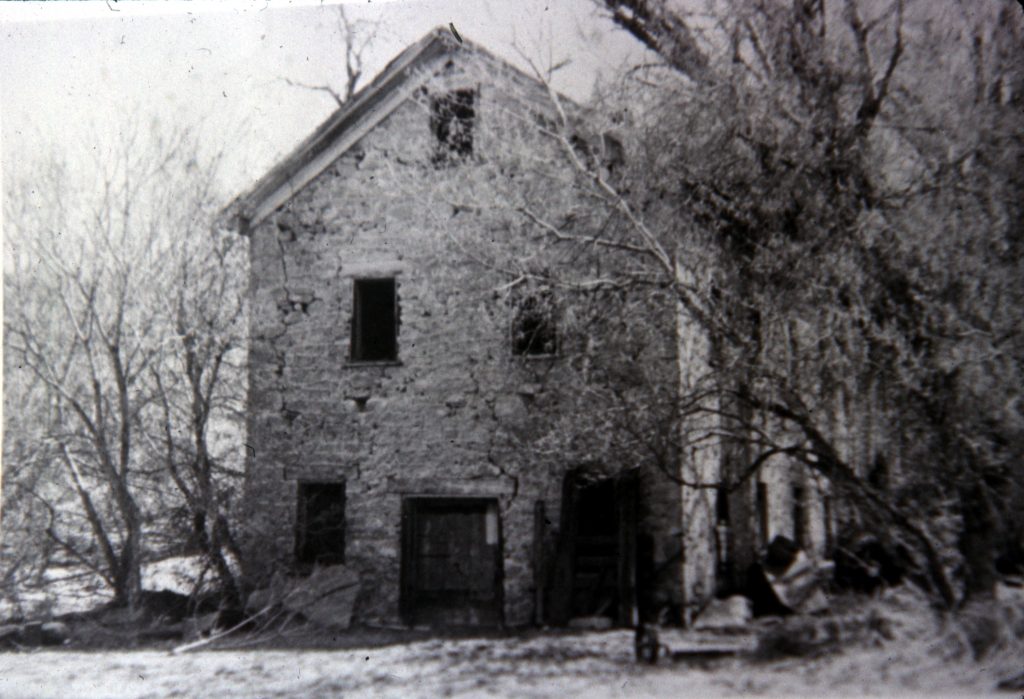
The model dairy, part of the Brigham City system, but located in Collinston, produced $8,000 worth of butter and cheese annually. In the year 1875, the dairy had 360 cows. Of these, 100 were owned by the cooperative and the remainder on loan from people in the community as capital shares in the dairy. In 1876 the dairy was reported to have produced 40,000 pounds of cheese for exportation. During its operation, the dairy employed many young people in exchange for board and wages paid in Co-op scrip. Of the two types of scrip, one was “Home D” (for home department) and was used to buy food and household items produced locally. The other type was designated “Merchandise” and was used at the Co-op or Mercantile store for imported goods. This scrip could be used only in purchasing items from the various co-op departments. At the dairy, young girls milked cows for $2.50 to $3.00 a week, men received $30 per month, and boys earned $15 a month. The dairy was one of the organization’s most productive departments.13Riddle.
Other Departments
Additional food enterprises included raising beef, mutton, and hogs; butcher department; farms producing food for the people and animals; horticultural department; molasses mills; and manufacture and maintenance of farm machinery and equipment. A pottery shop was established to make vessels for preparing and eating the food.
Besides the woolen mill and cotton farm, clothing departments included a hat and cap factory and millinery shop; a tailor; and seamstresses producing clothes and “fancy work.”
The silk industry became a huge venture throughout the Mormon settlement area. In 1876, during the Brigham Co-op era, President Brigham Young organized a Sera Cultural Organization and assigned the work of making silk to the Latter-day Saint Relief Society women. He sent to France for cocoons and instructions, and women from the various communities were sent to Salt Lake City to learn the art of reeling silk. During this training period, local people planted numerous mulberry orchards, and individuals wishing to obtain cocoons could get them from the mulberry leaves. Emilia D. Madsen became manager of the Co-op Silk Department in Brigham City.14D.U.P. History of Box Elder County, pp. 73-74.
Ten miles east of Brigham City Snow established a town called Flaxville where residents raised flax for the Co-op. He later renamed the town Mantua in honor of his birthplace Mantua, Ohio.
Some of the numerous construction enterprises were a shingle lath and picket mill, sawmills, brick and adobe shops, lime and blacksmith shops, architectural, carpentry, masonry and painting departments, and a public works department. A large two-story planing mill, powered by water from the creek, provided wood turning, planing, and working of moldings.
An education department provided school and seminary instruction, and a “tramp department” gave work assignments to hobos from the trains who sought handouts. They chopped wood and did other odd jobs in exchange for food prepared by local women.
Most of the Co-op departments and managers are included in the following list:15DUP History of Box Elder County. p. 111.
- Co-op Store, J.C. Packer;
- Woolen Mills, James Pett;
- Tannery, A. Hillam;
- Shoe shop, Charles Kelly;
- Harness Shop, Henry Bowring, Sr. and S. A. Johnson;
- Tailor Shop, Ola N. Stohl; Hattery, David Boothe;
- Rope Making, John Johnson;
- Silk, Emelia D. Madsen;
- Painting, J. L. Anderson;
- Cooper’s Work, H N. Peterson;
- Pottery, Ferdinand F. Hansen;
- Dairy, Christian J. Hansen;
- Farms, Henry Tingey, H. P. Jensen, N. H. Nielson, George Reeder;
- Millinery, Ann Howell Jones;
- Flower Making, Mary Stark;
- Braiding, Fanny Grahel;
- Fancy Work, Emelia D. Madsen;
- Butcher Shop, Paul Stark;
- Blacksmithing, John D. Reese;
- Wagons, N. C. Mortensen;
- Cabinet, Martin L. Ensign;
- Carpenters, William H. Wrighton;
- Architect, James Pett;
- Lumber and Shingles, Charles Wight;
- Bricks, Henry Kotter, Maker;
- Adobes, A. Bair;
- Masons and Plasterers, A. A. Jansen;
- Cattle and Sheep, William Box, George Facer, Mr. Morris;
- Brush, John Miles and Ole Petersen.
Wages and Shares
The paid-up capital of the Brigham City Co-op in 1874, which amounted to $120,000, was owned by 372 shareholders.16DUP History of Box Elder County. p. 111. Wages paid to Co-op workers were equivalent to those paid to workers in similar jobs in other parts of Utah and of the country. Wages and dividends were not paid exclusively in cash, however, but also in the previously-mentioned “Home D” and Merchandise scrip and shares. Cash was retained to develop and operate both new and existing departments in the cooperative.17Arrington. p. 207.
Snow explained the system of shareholder dividends in a letter to Brigham Young:
At first we limited our operations to mercantile business, and as it progressed it gained the confidence of the people, and gradually increased in number of stockholders, till about the fifth year from its commencement 1869 it consisted of some two hundred shareholders, with a capital stock of twenty thousand dollars. Our dividends were paid in merchandise at the selling price rates, and averaged about twenty five per cent per annum.
The objective of this co-operation is not so much for the purpose of creating large dividends, as it is that the people may obtain easily what their necessities demand and in this respect become self-sustaining, and rendered independent of foreign importations, according to your earnest teachings.18Lorenzo Snow to Brigham Young, August 6, 1873 quoted in the Millenial Star, Volume 35-36, pg 620.
Almost everyone in town worked for the Co-op, all starting and ending their workday at the same time when they heard the ringing of the bell in the Courthouse tower. “At fifteen minutes to seven the department doors were opened and the ringing of the triangle told the workmen to begin the labor of the day.”19D.U.P. History of Box Elder County, p. 110.
By this time, the economic system organized by Lorenzo Snow in Brigham City was becoming a prototype for other communities in the Mormon settlement area. From Paris, Idaho, and Hyrum, Utah, in the north to St. George in the south, communities were adopting systems based closely on what was being done in Brigham City. Even the writer Edward Bellamy spent several days in Brigham City examining the system and discussing its operation with Snow.20Arrington. p. 199.
Visitors to the community were favorably impressed with the system and often wrote letters to the Deseret News, including the following submitted in August of 1875:
Everybody was busy doing something, everybody had plenty to eat, drink and wear, there being no actual poor. . .21Millenial Star, Monday, June 14, 1875. Volume 37, pg. 381.
Another visitor to Brigham City that same month wrote:
I did not see a loafer or idle man, boy, woman or girl during my visit; industry, prosperity, and contentment seemed to characterize the entire community.22Deseret News 24:512 (Cited by Riddle) According to Arrington, Deseret News August 31, 1875.
The Salt Lake Herald of October 25, 1876, stated:
If the example of the inhabitants of this town was more generally followed, Utah would be far more prosperous and her people much better off. Our present suicidal policy of exporting raw materials and importing manufactured articles would be stopped; we would be far more independent of our sister states and territories; the financial panics of the east or west would not affect us. . .23“Successful Co-operation,” Salt Lake Herald, October 25, 1876, pg. 3.
Decline
The Co-op maintained a high level of success until the late 1870s when a series of disasters occurred within a nine-month period. Lorenzo Snow described the misfortunes in a letter to Franklin D. Richards written in 1879:
Two years ago today, about two o’clock in the morning, we were aroused from our slumbers by the ringing of bells and startling cries of fire! fire! fire! Our woolen factory was all in flames, and in less than thirty minutes, the whole establishment with its entire contents of machinery, wool, warps, and cloth lay in ashes.
This involved a cash loss of $30,000. While viewing the building, as it was rapidly consuming, my mind became agitated with painful thoughts and reflections, whether the people could sustain the severe pressure which would bear upon them through this unforeseen calamity, or lose heart and courage in supporting our principles of union. These misgivings, however, were unfounded; for the people resolved at once to try again and went to work with a hearty good will, and by extraordinary exertions, in less than six months had erected another factory, and in operation, superior to the one destroyed.
But this involved a large indebtedness. In view of liquidating this liability, we engaged a large contract to supply timber and lumber to the Utah & Northern Railroad, incurring a heavy expense in building a saw mill in Marsh Valley, Idaho, and moving there also our steam saw mill, and were employing about 100 men, everything moving along prosperously.24Printed in Tullidge’s Quarterly Magazine, Volume 2, 403-404. Original letter at https://dcms.lds.org/delivery/DeliveryManagerServlet?dps_pid=IE154456
Lorenzo Snow’s sister Eliza R. Snow Smith felt that the development of the Idaho sawmill promised to be one of the cooperative’s most successful ventures. It would be a means of recouping the losses incurred by the fire and crop losses. Her prediction proved to be incorrect, however, because a mob raided the Brigham City camp and arrested 53 members of the group there. They were charged with cutting timber illegally.25Eliza R. Snow Smith. Biography and Family Record of Lorenzo Snow. p. 169 http://archive.org/stream/biographyfamilyr00snowrich#page/n9/mode/2up
These setbacks followed crop losses in 1877 when 500 acres of grain on the cooperative’s large farm in Portage were destroyed by grasshoppers, and 500 more acres were destroyed the following year by drought.
Lorenzo Snow’s letter to Franklin D. Richards continues:
The following July 1878 a tax of $10,200 was levied on our scrip, by O. J. Hollis, U. S. Assessor and Collector of Internal Revenue. Though illegal, unjust and highly absurd, the payment could not be avoided, therefore we borrowed the money and paid this assessment. Through these and other unfortunate occurrences we became greatly embarrassed in our business. This embarrassment, as may be seen, is not the result of the natural pressure of the times, nor financial crisis which has broken up thousands of banking institutions and business firms throughout the world, neither that of mismanagement nor any defect in our systems of operations; but as before mentioned, it has been brought about, through a succession of calamities, unparalleled in the experiences of any business firm in this or any other Territory.
The following is a showing of our loses, including the assessment, all occurring in the space of about nine months:26Arrington. p. 216. A very similar letter was sent to Joseph F. Smith – see https://dcms.lds.org/delivery/DeliveryManagerServlet?dps_pid=IE154456 image 11.
Expense Amount Crops destroyed by grasshoppers $4,000 Crops destroyed by drought $3,000 Burning of Woolen Mills $30,000 Losses in Idaho $6,000 By Assessment on Scrip $10,200 Total $53,200
The Brigham City Mercantile and Manufacturing Association was never a part of the United Order, although Lorenzo Snow saw it as a stepping stone, with the United Order as the goal.27Journal of Discourses, Volume 16, 276. http://jod.mrm.org/16/273 (and he did sometimes refer to it as the United Order).Eliza R. Snow Smith. Biography and Family Record of Lorenzo Snow. p. 298. http://archive.org/stream/biographyfamilyr00snowrich#page/n9/mode/2up Members of the Brigham City Co-op did not practice the Law of Consecration, and employees received wages based on the work they performed. In the midst of the Co-op’s financial problems, Lorenzo Snow sent a letter to the Church’s authorities in Salt Lake offering to join the United Order, essentially giving the church both the resources and the (substantial) debts of the struggling institution. In 2014 dollars, the debt would have amounted to at least $1 million. The letter was “willingly” signed by Lorenzo Snow and fifty-five men including Co-op department heads and political and religious leaders.28Lorenzo Snow, “Two Letters from Lorenzo Snow Describe the Condition of the Brigham City United Order,” 1879, 10–12, Church History Library.
The offer was not accepted, however, and the combined losses were so great that leaders began selling Co-op industries, usually to superintendents of the cooperative departments, and the financial system in the community gradually returned to that of private industry.
Lorenzo Snow’s final entry in the cooperative minute book reflects his feelings about the entire cooperative enterprise:
Because of many losses and disasters. . . we have discontinued some of our enterprises and curtailed others. Yet for a period of fifteen years, our union has prevented division in mercantile business; say nothing about many other things which have been done by our union, and I have nothing to regret of all we have accomplished. We have kept out our enemies, and in all these matters we did them by common consent.29“United Order Minutes” (MS, L.D.S. Church Historian’s Library), July 20, 1880. Probably reel 44, box 50, fd. 3 in Brigham City Mercantile and Manufacturing Association records, 1865-1895, Box Elder Stake (1877-1944); Box Elder County United Order; Snow, Lorenzo, 1814-1901
Call Number: LR 933 34 Register at http://churchhistorycatalog.lds.org/primo_library/libweb/static_htmls/custom/registers/register_134893.htm
In 1884 the federal government returned the $10,200 tax on scrip. Part of this money was used to pay accumulated debts and part of it to build a new cooperative retail store building in 1891. The store continued to operate until the Co-op closed down after bankruptcy partly due to the depression of the 1890s. On November 30, 1895, the local court appointed a receiver for the cooperative organization. After all of the Co-op properties were sold and all creditors paid, the association charter expired early in 1896. The cooperative store was taken over by Deseret Savings Bank. The building has been subsequently occupied by First Security Bank and at the time of this writing houses Wells Fargo Bank.
Notes
Biography and family record of Lorenzo Snow: One of The Twelve Apostles of the Church of Jesus Christ of Latter-day Saints (1846) by Eliza Roxcy Snow
Search Brigham City Museum Collections
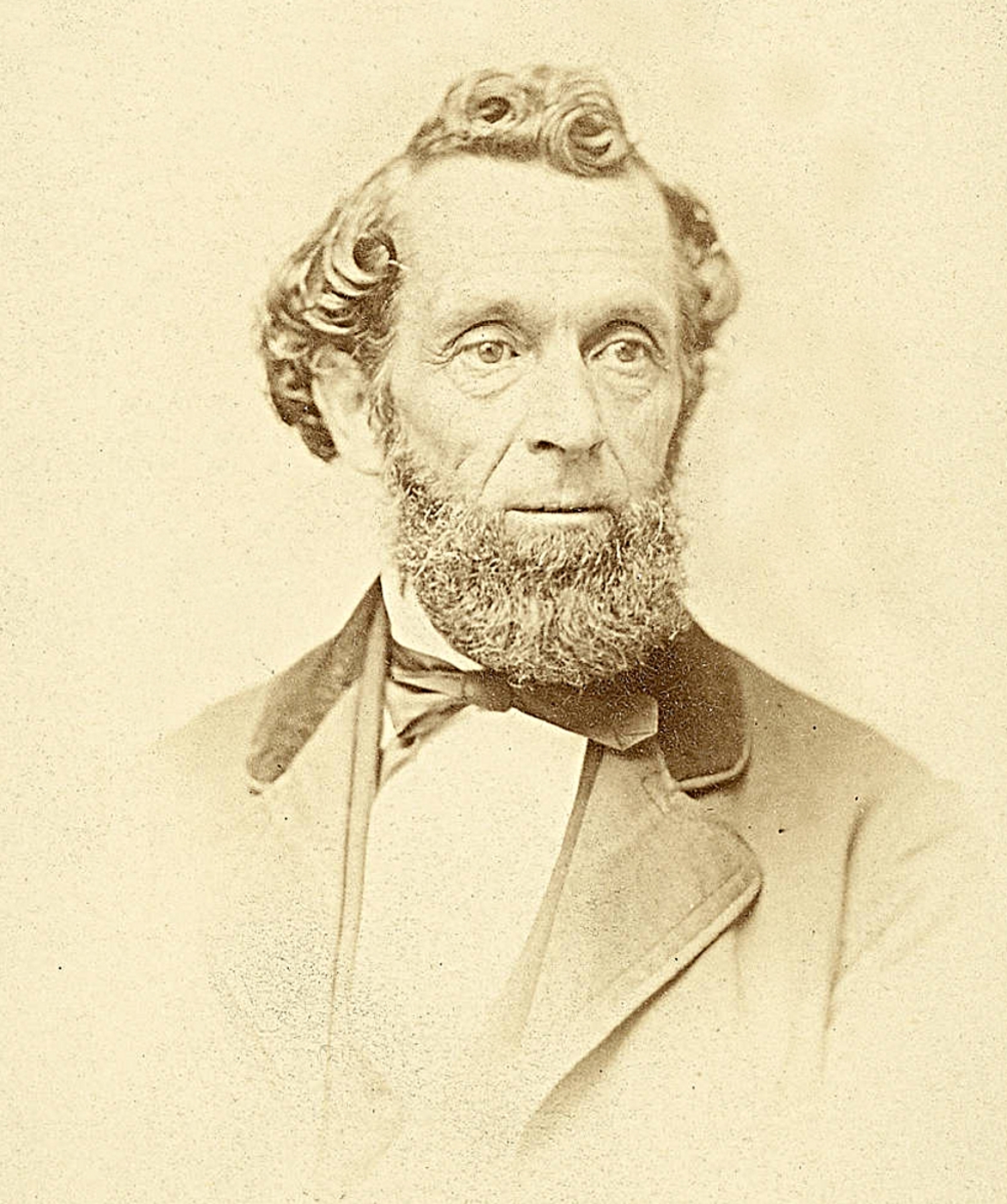

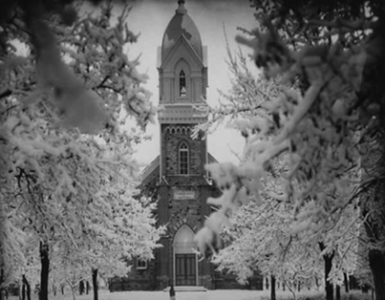
[…] institutions, providing new venues for community life. Church meetings moved to the tabernacle, the Co-op built a combination store and social hall, and the four newly-created wards were each to build a […]
[…] Spurred by private business and a more stable tax base, Brigham City entered a relatively prosperous period in the 1880s and 1890s, evidenced by a growth in both housing and public improvements. Some of those improvements were based on technology like telephones, electricity, and indoor plumbing became available; others simply on access to cash sources and products not readily available during the Co-op period. […]
[…] the Co-op, or Brigham City Mercantile and Manufacturing Association, part of the United […]